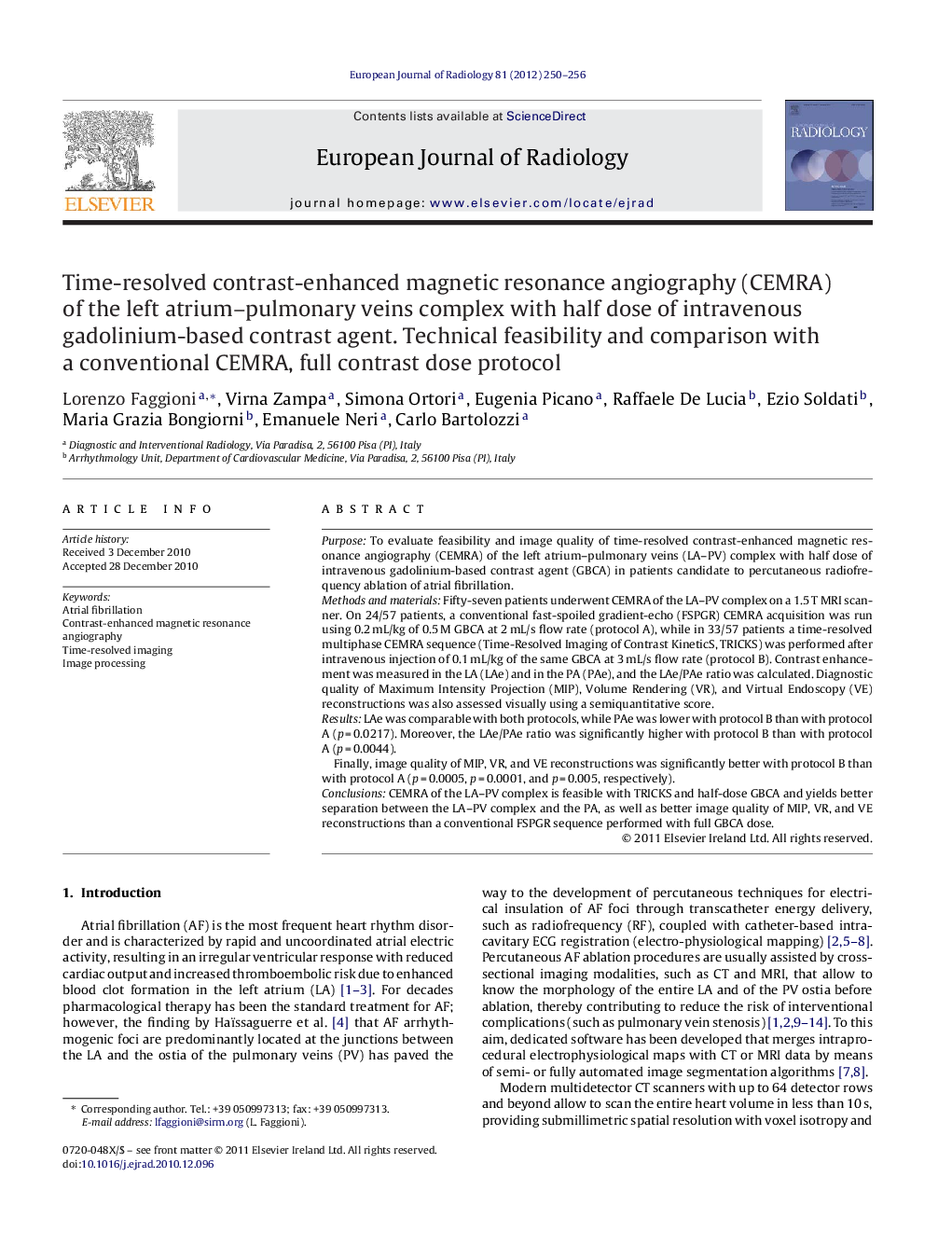| کد مقاله | کد نشریه | سال انتشار | مقاله انگلیسی | نسخه تمام متن |
|---|---|---|---|---|
| 4225957 | 1609793 | 2012 | 7 صفحه PDF | دانلود رایگان |

PurposeTo evaluate feasibility and image quality of time-resolved contrast-enhanced magnetic resonance angiography (CEMRA) of the left atrium–pulmonary veins (LA–PV) complex with half dose of intravenous gadolinium-based contrast agent (GBCA) in patients candidate to percutaneous radiofrequency ablation of atrial fibrillation.Methods and materialsFifty-seven patients underwent CEMRA of the LA–PV complex on a 1.5 T MRI scanner. On 24/57 patients, a conventional fast-spoiled gradient-echo (FSPGR) CEMRA acquisition was run using 0.2 mL/kg of 0.5 M GBCA at 2 mL/s flow rate (protocol A), while in 33/57 patients a time-resolved multiphase CEMRA sequence (Time-Resolved Imaging of Contrast KineticS, TRICKS) was performed after intravenous injection of 0.1 mL/kg of the same GBCA at 3 mL/s flow rate (protocol B). Contrast enhancement was measured in the LA (LAe) and in the PA (PAe), and the LAe/PAe ratio was calculated. Diagnostic quality of Maximum Intensity Projection (MIP), Volume Rendering (VR), and Virtual Endoscopy (VE) reconstructions was also assessed visually using a semiquantitative score.ResultsLAe was comparable with both protocols, while PAe was lower with protocol B than with protocol A (p = 0.0217). Moreover, the LAe/PAe ratio was significantly higher with protocol B than with protocol A (p = 0.0044).Finally, image quality of MIP, VR, and VE reconstructions was significantly better with protocol B than with protocol A (p = 0.0005, p = 0.0001, and p = 0.005, respectively).ConclusionsCEMRA of the LA–PV complex is feasible with TRICKS and half-dose GBCA and yields better separation between the LA–PV complex and the PA, as well as better image quality of MIP, VR, and VE reconstructions than a conventional FSPGR sequence performed with full GBCA dose.
Journal: European Journal of Radiology - Volume 81, Issue 2, February 2012, Pages 250–256